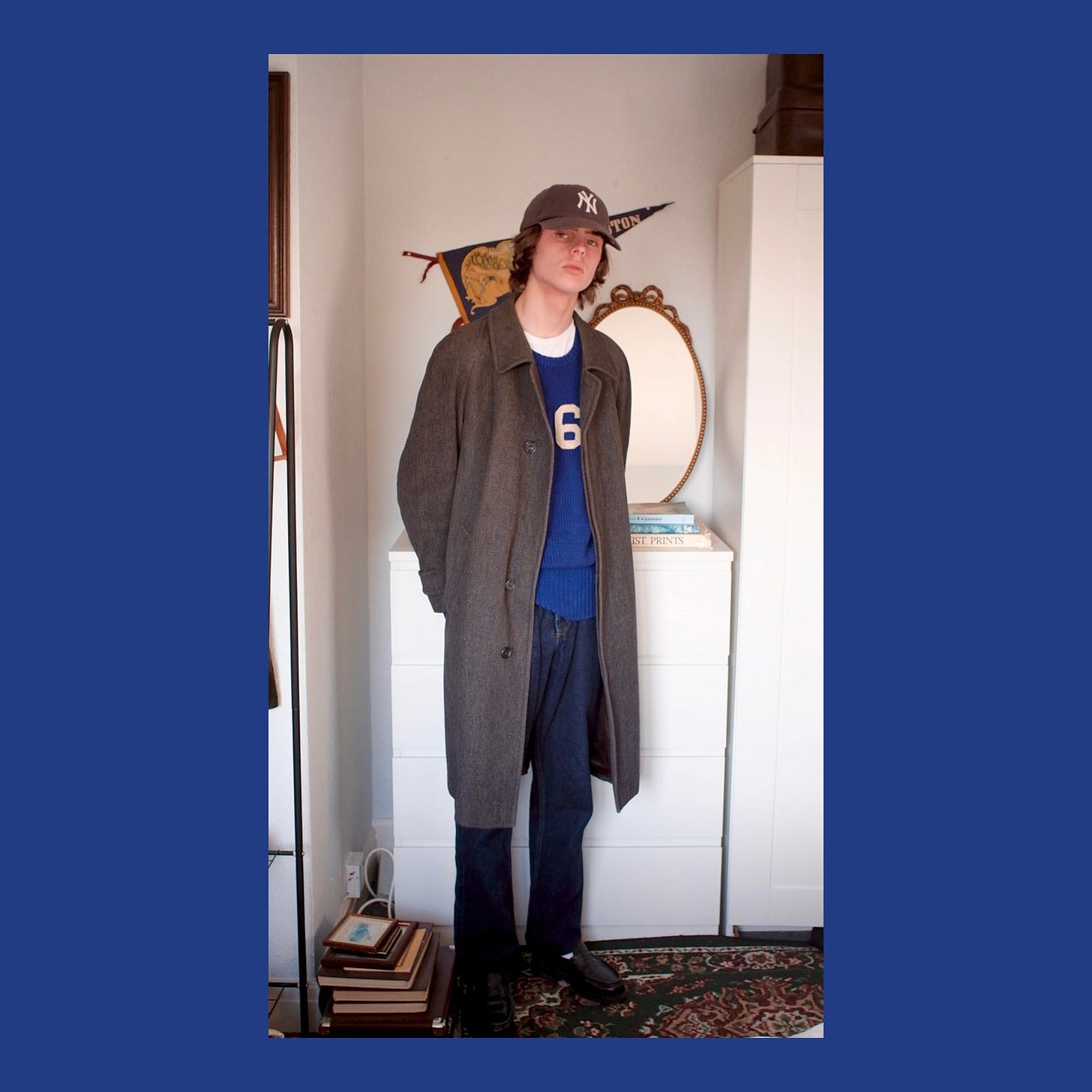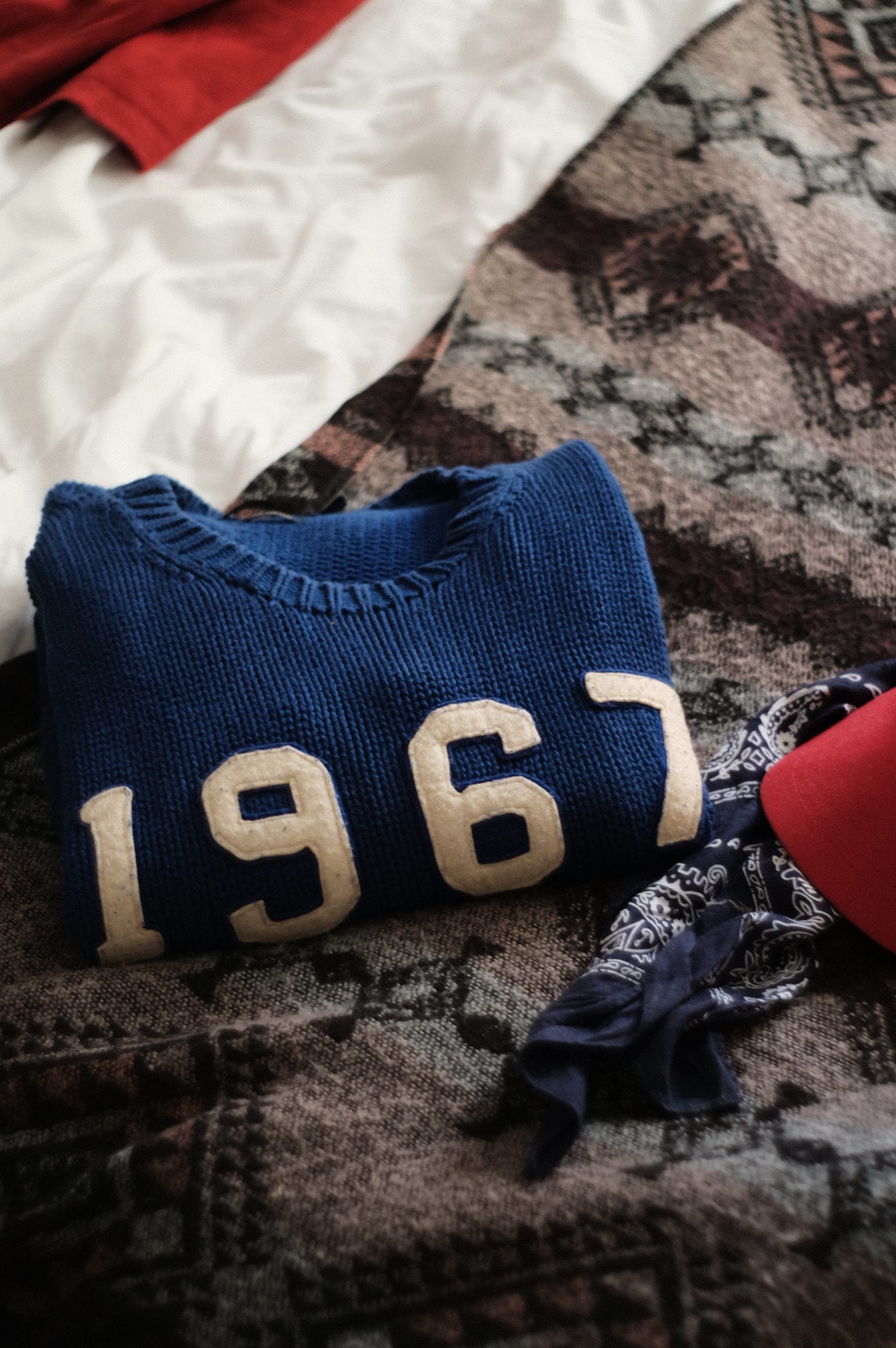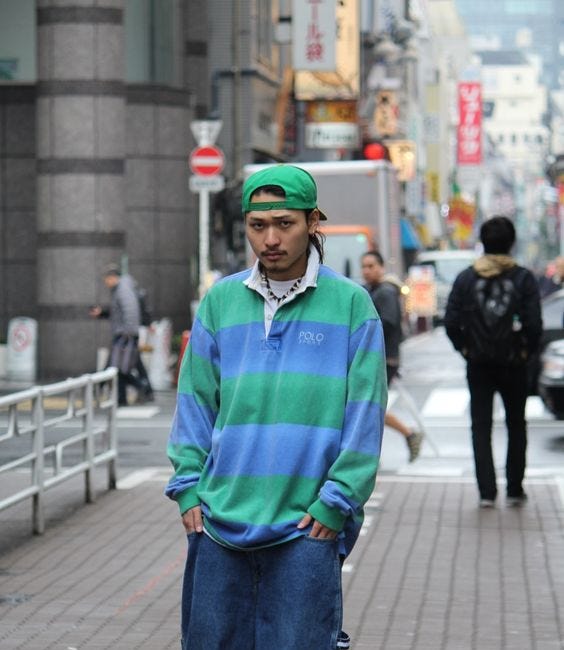How I Broke Each of My Style Principles, and Why That’s Exactly What Should Happen
Meeting #29: Approaches change but concepts endure
Hello! Thank you for attending this week's meeting, grab a copy of the bi-weekly bulletin here or on your way out for thoughts on mainstream prep, among other bits and pieces. This week, a Prep Club retrospective, in which I explain how I was wrong a year ago. This’ll be a little more anecdotal than usual, but I hope still of value.
Small Favour: If you wouldn’t mind, please share this post, or the club as a whole, with a friend who you think might be interested, it would mean a whole lot. Please also subscribe if you haven’t yet, again, it makes a big difference.
One of the earliest meetings of the club explored the idea of keeping personal style principles, small rules which one adheres to, aiding in a sense of cohesion across their wardrobe and outfits. The basis for today was a recent revisitation to that meeting, a realisation that I have abandoned everything I laid out there. It’s a shorter read, and probably worth skimming through before continuing here, just for some more context.
As is to be expected, at the time I had no concept of how much my personal style was set to change over the coming months [further thoughts on the nature of this change can be read here]. What I seek to make clear today is that the breaking of these principles is a very, very good thing, in fact this process is vital in order for change to happen in an organic fashion. The club has always warned against replacing one’s entire wardrobe in one or two goes, I’ve kept away from discussing much about capsule collections because of this, even if they are somewhat a part of my fashion approach. Change ought to happen gradually, having principles and then deciding when to reject them can perhaps be thought of as a series of stepping stones along a longer path.
Here, we arrive at another important statement to make, I have not abandoned the concept of having style principles, though these days I’ve made peace with the word fashion and would likely use that instead. Ergo, I will share some new principles once I’ve scrutinised my previous ones, these aren’t innately better principles, just ones that govern my current personal style.
Out with the old
1. No zips
A victim of the general modernisation of my wardrobe, I had for a long time avoided zips for that very reason, to avoid appearing too modern. The most notable shift here was one of my attitude towards timelessness, I no longer believe it useful to pursue timelessness explicitly, to think of how a garment exists in time. Rather, timelessness comes far more from a clear sense of personal style, from engaging with general monocultural trends (believe it or not we do still have some) through the lens of one's own approach to fashion. For example, it is the fashion currently to air on the side of wide trousers, within my personal style my influences from ivy mean I opt for flannels and chinos in wider cuts. On the other hand, I haven’t followed the crowd in opting for a cropped barn jacket, I’ve stuck to my trusty Beaufort.
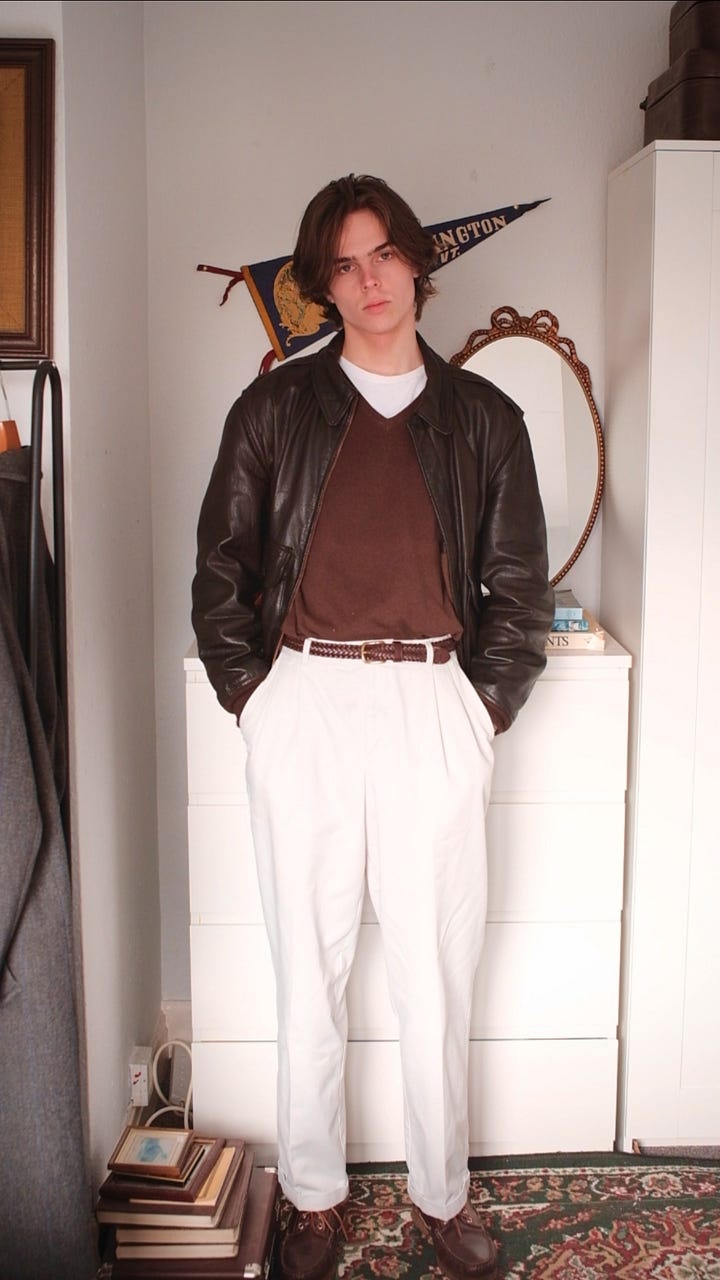

These days three out of four of my outerwear staples are zip featuring, zip heavy even: Beaufort, Mountain Parka, A2. These are still truly classic garments, their classic status being a far greater asset to timelessness than the absence of zips.
2. Dress in contrast to the weather
I’ve touched on developing attitudes towards colour already this autumn, here we encounter another mechanism through which one can become motivated to adapt their fashion. I grew rather tired of my over-reliance on earth tones in my wardrobe, I’d lived in them for a good couple years, fatigue is unsurprising.
I’ve brought far more blue into my wardrobe, navy and cobalt especially, and lean more on jewel tones. I still very much like this idea, to have contrast with the environment, but it’s more something to do from time to time, than to keep as a fundamental.
3. No Blue Oxfords
This is sort of a half break, I still think blue Oxfords make me look like a tory, but the blue university stripe has become a staple. It sits in a category of “hall-of-famers” which I’ll discuss a little more momentarily.
Ultimately, white is still my staple, it makes the most sense for layering, but when it comes to wearing an Oxford without an extra layer, nothing beats a uni-stripe, and I do think it just has to be blue for that recognisability factor.
4. Docs/ Lugs
A process of fashion maturation here, further reading on shoe buying approaches can be found here. Over time I found scope to introduce slimmer, leather soled shoes into my rotation. Particularly a pair of classic penny loafers from Sebago, again we’re on the topic of recognisability.
Rather than a single principle to govern my shoe wardrobe approach, I developed my 3+2 shoe wardrobe, which developed into the 3+3. As an aside, it is not lost on me that this is a tremendous overthinking of things, it is entirely possible to wear and buy clothes without thinking this hard about them, but systems and principles can be a really nice way to stay clear of overconsumption habits. In the case of the shoe wardrobe it acts as a reminder that footwear is situational, and a shoe rotation can be equipped for many situations without being particularly big.
In with the new
1. Wear the classics
I have developed a deep love for wearing classic pieces in their classic iterations, “hall-of-famers” I like to call them. A uni-stripe Oxford, a green Barbour, black for penny loafers and brown for boat shoes, a navy blazer. The move then is to play with context, to put them together in unexpected ways, to take a uniform and change one thing.
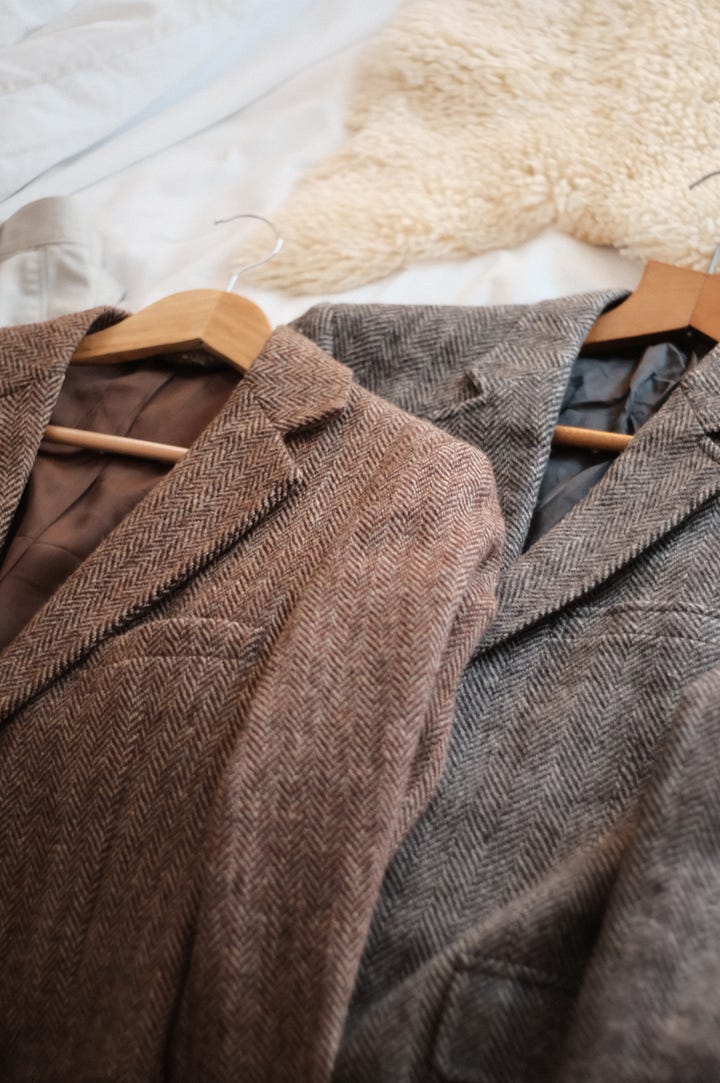

By having these classics, I am now more confident in the temporal resistance of my wardrobe, icon status is remarkably powerful in this context.
2. Avoid large, explicit labelling
Where possible, I prefer for it not to be immediately and explicitly obvious who made my clothing. Where I do feature labelling, it is of non-manufacturers: colleges, automakers, sports teams, or it is less explicit: my PRL 1967 jumper as an example. Some things like the horses on my polo oxfords are somewhat unavoidable, but they tend to be layered over anyway. Basically, I avoid garments for which the manufacturer logo or name is the primary focus.
The desire here is for my wardrobe to be my own collection, to appear as though it could all come from one label. I prefer not to tie my personal style to any one brand.
3. Build Venn diagram capsules
My new approach to colour is informed, but not governed, by the concept of capsules, that is to say collections of clothing in which any given piece goes with any other. There are a number of issues I take with this practice, foremost is the publishing of capsule collections as fashion content, they are invariably unaccommodating, unhelpful, and perpetuate the aforementioned misconception regarding the replacing of an entire wardrobe all at once.
Ignoring these, thinking of capsules in terms of colour palettes and how they might overlap in the manner of a Venn diagram, helps in building a cohesive yet varied wardrobe. As an example, I’d identify navy, emerald green, dark brown, and cream as one of my palettes, and olive, cobalt, navy, and black as another; navy fitting into both. Having a conception of these palettes I feel enables more intentional acquisition, another defence against those spontaneous purchases.
That, I think, is the ultimate purpose of these principles, a set of questions to ask in order to keep the consumption aspect of this hobby somewhat in check. Their secondary function is that the resultant wardrobe appears more considered and cohesive, thus one generates a clear sense of personal style rather than an engagement with a monoculture.
These days I appreciate that these principles will change again, and that's exactly what should happen. Fashion is fundamentally a discipline of identity, and identity is a process of becoming not a state of being. Personal fashion can change, it should just be allowed to change slowly.
Prep Club adjourned, see you soon
.





